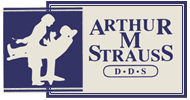Articles - Your Health Magazine, March 2008
Women, Breathing, Sleep Apnea, Menopause, Posture and More – Part II
Part Two of Three
During the menopause period we see posture changes in women involving an increase in curvature of the lower neck and upper back area. This is referred to as the “Dowager’s” hump. We also see decreasing bone density. Do these types of posture changes help breathing by increasing the airway size in the back of the throat? Can this be related to compensations by the body to manage breathing? Can it also be, a partial explanation of why many people become more stooped over as they get older?
Ideal posture is achieved when the earlobes are aligned directly over the center of the shoulders, hip bones, knees and ankles. If a person with less than ideal posture tries to stand flat against a wall, their head will tilt upward. An attempt to tilt their head downward, while keeping it flat against the wall, so their eyes are parallel to the horizon, similar to a soldier at attention, can cause a choking feeling. When they move away from the wall and their posture returns to its compensated, or “normal” state, their breathing returns to normal. This applies to both men and women, though I believe the changes in men’s posture is more steady and gradual over the years than in women.
You may ask why these changes are not universal. There are reasons why I believe most everyone does not appear to be affected the same way. It lies in what Farrand C. Robson, DDS of Tacoma, Washington observes as airway/breathing compensations. I have, heretofore, discussed two of the three compensations. The first, an increased state of “fight or flight” and the second, posture changes that often appear to be characterized by the forward position of the head. The third compensation is clenching and grinding of the teeth.
Grinding of the teeth moves the lower jaw forward mimicking the jaw position of many of the dental mouthpieces used to treat sleep obstructive apnea. It moves the back of the tongue forward out of the throat. Clenching of the teeth referred to in the “Jaw Tongue Reflex”, tightens the throat muscles, keeping them from collapsing inward from the negative air pressure caused by a narrower airway. It’s like changing from a collapsed plastic straw to a rigid glass straw in drinking a thick milkshake.
Save this article, as it leads into part three in your next Your Health Magazine issue.
